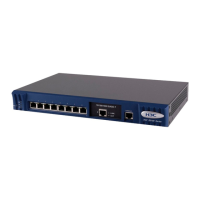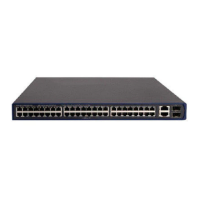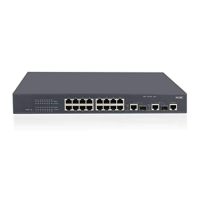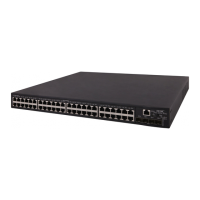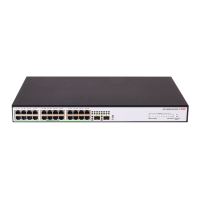1-12
with the corresponding NTP broadcast/multicast client. Otherwise, NTP authentication cannot be
enabled normally.
z Configurations on the server and the client must be consistent.
Configuration Procedure
Configuring NTP authentication on the client
Table 1-11 Configure NTP authentication on the client
Operation Command Description
Enter system view
system-view
—
Enable the NTP authentication
function
ntp-service authentication enable
Required
Disabled by default.
Configure the NTP authentication
key
ntp-service authentication-keyid
key-id
authentication-model
md5
value
Required
By default, no NTP
authentication key is
configured.
Configure the specified key as a
trusted key
ntp-service reliable
authentication-keyid
key-id
Required
By default, no trusted key is
configured.
Configure on the client
in the server/client
mode
ntp-service
unicast-server
{ remote-ip | server-name }
authentication-keyid
key-id
Associate
the
specified
key with
the
correspo
nding
NTP
server
Configure on the
symmetric-active peer
in the symmetric peer
mode
ntp-service
unicast-peer
{ remote-ip
| peer-name }
authentication-keyid
key-id
Required
For the client in the NTP
broadcast/multicast mode, you
just need to associate the
specified key with the client on
the corresponding server.
NTP authentication requires that the authentication keys configured for the server and the client be the
same. Besides, the authentication keys must be trusted keys. Otherwise, the clock of the client cannot
be synchronized with that of the server.
Configuring NTP authentication on the server
Table 1-12 Configure NTP authentication on the server
Operation Command Description
Enter system view
system-view
—
Enable NTP authentication
ntp-service
authentication
enable
Required
Disabled by default.
Configure an NTP
authentication key
ntp-service
authentication-keyid
key-id
authentication-mode
md5
value
Required
By default, no NTP authentication key is
configured.
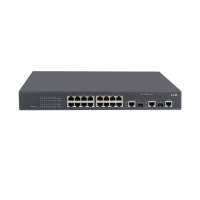
